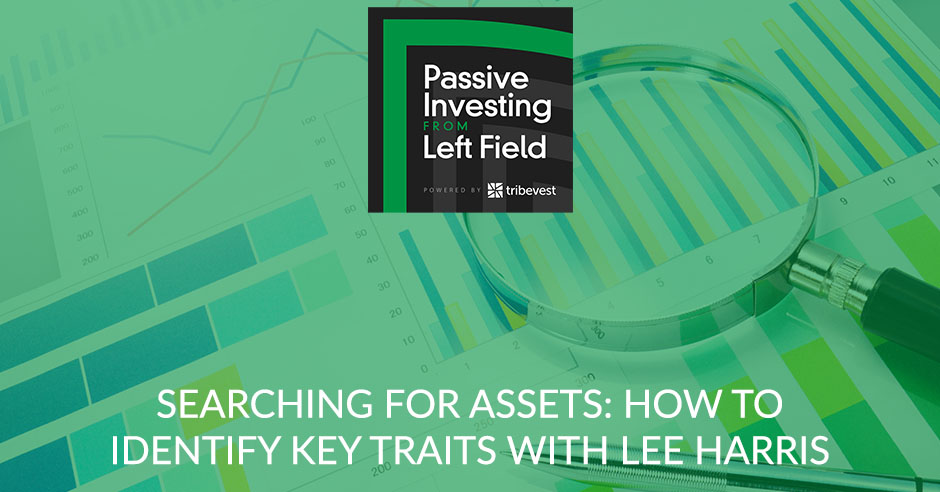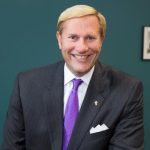
What are you looking for when you search for assets? For R. Lee Harris, the President and CEO of Cohen-Esrey, population growth, job growth, and median income in a one to three-mile radius are vital traits. Cohen-Esrey is a family of companies involved in apartment management, affordable housing, development, apartment acquisition and ownership, tax credit, syndication, and construction. Today, R. Lee talks with host Jim Pfeifer about why it’s essential to search for assets the programmatic way. When you know what traits are necessary for your assets, you become more intentional with your investments, making the process easier and more effective! Tune in and learn to streamline your search for assets!
—
Listen to the podcast here:
Searching For Assets: How To Identify Key Traits With Lee Harris
I’m pleased to have Lee Harris with us. He’s the President and CEO of Cohen-Esrey, a family of companies involved in apartment management, affordable housing development, apartment acquisition and ownership, tax credit syndication, and construction. He started working at Cohen-Esrey after graduation from Kansas State in 1975. He has been doing this for a while. Lee, welcome to show.
Thank you. I appreciate it very much.
I’m glad you’re here. The first question I always ask is, what is your journey? I realize that you’ve had a long one with the same company, which is amazing. Most people don’t do that anymore. I’d like to hear a little bit about your journey, how you got into real estate right out of college, and what you’ve been doing since then.
The journey began in the eighth grade. I remember taking a trip to Mexico City with my parents and my sister. It would have been in a 1967 or 1968 timeframe. I took a bunch of slides and back then, you took Kodachrome slides. When I looked at them, I noticed that every single picture was of a big building in Mexico City. I had an affinity for buildings and construction. I remember writing a letter to my grandmother thanking her for a Christmas gift and mentioning how we had a new six-story bank building that had been constructed in Manhattan, Kansas where I grew up.
For whatever reason beginning in the eighth grade or so, I was enamored with real estate. I got a real estate license while I was in college. I sold some houses and did a small development deal. I thought I was going to go to work for a shopping center developer out of college, and that would have been in 1975. That job did not materialize. Thankfully, Bob Esrey, who was a young upstart real estate entrepreneur, took a chance on me. I was a 21-year-old kid then. He hired me to manage a 234-unit apartment complex in Topeka, Kansas.
My training was, “Here’s your desk and your phone. Lots of luck. You’re on your own.” It was a miserable first three months. Everything went wrong. I’ve never lived in an apartment complex. I’ve seen them from the street but I’ve never lived in one and I was supposed to be managing one. I beat the pavement for the first 90 days looking for a real job at Topeka, Kansas where we had moved to take this position. Thankfully, in 1975, there weren’t any jobs. I finally figured out how to get my act together and that’s what we did. One thing led to another and here I am now.
You have been with the same company for many years. I’m sure you’ve been in different roles. Can you talk about some of the different real estate investments or thesis you have had over the years? I assume you haven’t been doing the same exact thing the whole time. What are some of the assets you’ve been into and some of the investments that you’ve done, both on the good side and the bad side?
The Cohen history was two companies. The Esrey company, where I got my start, and the Cohen company, which was more of commercial leasing and brokerage firm. The Esrey company was a property management organization. We did a little bit of a stock swap early in the 1970s. We owned a little of the Cohen company and they owned a little of us. We partnered on a lot of things and then we did a merger in 1987. We had a very significant commercial leasing and brokerage, property management operation, apartments, office buildings, shopping centers, industrial, etc.

Over the decades, we made some one-off investments here and there. We owned office buildings, shopping centers, some industrial property, some raw land, as well as apartments. Apartments have been the best performer for us over the years. If it’s a multi-tenant office building, it was a challenge to make the deals work when you have tenants moving out, and then you have the commission expense. You have the tenant improvements that are required the next time somebody moves in.
Fortunately, we didn’t get too heavily into office building investments. We did develop some small shopping centers with convenience stores and some local tenants. We had a grocery-anchored store in one of our shopping centers. The retail did okay for us. It wasn’t stellar. Industrial probably did better than the retail. We had some smaller 1,000 square foot type of retail operations but the real impetus for return on investment came through apartment investing. That’s what Bob Esrey and I have been focused on since the mid-2000s, and then a much more programmatic way since 2010.
Apartments have outshone the rest of the investment opportunities. We made a mistake in 2006 of getting involved in a subdivision. It was a small subdivision with large lots. We sold three of those right out of the blocks and then the world came to an end in 2008 or so. We had investor money in there. We carried that deal for several years and finally got out of it several years ago, but it cost me $600,000 or $700,000. I got every nickel of the investors’ money back to them, which was very important, even though I didn’t guarantee that. That taught me never ever to jump into the subdivision business. That’s probably the worst investment we made.
The best has been multifamily and the worst has been subdivisions. When you say you’ve gotten into multifamily in a programmatic way, can you explain what you mean by that?
As opposed to buying a one-off property here or there, we’ve developed a real thesis around what we call a value-add space. We’ve coined a term called the best B. A B-class property would be an apartment community that was built in the mid to late 1980s all the way up to 2015. We have targeted specific markets that are generally in Sun Belt and Midwest regions. We don’t invest in the Northeast and the West Coast. Those are the markets that are so specialized that we don’t understand them.
We’re looking for population growth and job growth. We’re looking for class-B rent growth in those markets. On a much more programmatic basis, when we find an asset we like, we’re paying attention to median income and household income in a 1 and 3-mile radius. We’re looking at crime statistics. We’re looking at school districts and how they stack up. It’s very intentional. We’re looking at 350 units as the sweet spot. We’re going to spend $3,000 to $8,000 a unit on physical improvements such as unit interior features, plank-style flooring, granite countertops and stainless steel appliances.
We focus on amenities to give them some pizazz and any exterior improvements that we need to make. Maybe it’s a siding replacement or balconies. What we end up with is a product that mimics class-A. If a person is a class-B renter, and let’s say that there is an overbuilding in a particular market and the rents roll back in the class-A space, what usually happened in my experience is that people move up. Class-B renters say, “I can now rent for $75 or $100 more of that class-A space. That’s great. Let’s do it.” However, that differential between class-A and class-B rent is $500 and more in markets all across the country. If there is an overbuilding in class-A, which we’re not seeing, by the way, we don’t expect the wrench to roll back $300 or $400.
Never jump into the subdivision business. That’s probably the worst investment you can make.
Our approach is a margin of safety approach. Even if there is that tendency to move up, we’re giving everybody exactly what they would get in a class-A product, but maybe not the 9-foot ceiling. We haven’t figured out how to raise the ceilings to 9 feet. For the most part, they can get everything else for much less money in our products. We are much more intentional now about the way we go about selecting the properties that we buy and in terms of how we execute a strategy. In the old days, it was to buy something that we thought was a good deal on a one-off basis.
Why is there such a spread between the class-A rent and the class-B rents?
There has been this confluence of demographics that is interesting. Ive never seen it in my whole career and that is we have the Baby Boomer generation. My generation used to be an 80% homeownership cohort. A lot of Baby Boomers are selling their homes as they retire and moving into apartments so they can have more freedom and they can travel. That number is now down to 77%. Each percent is about one million people so it’s a big number.
Secondly, we have the Millennial generation which is even larger than the Boomers. Our Boomer generation used to be about 78 million. It’s about 70.5 million people now. The Millennial generation is a 72-million person cohort. We see a little bit of an uptick in homeownership there. It started at about 35%. Now, they are up to 42% or so but a lot of them are renters by choice, which is different than it was many years ago when I was that age. People like the lifestyle. They do have student debt issues and credit score issues. They don’t have enough saved for down payments for homes and they like the lifestyle. They are getting married and having kids later. All of that is working in favor of an apartment lifestyle.
The third generational cohort, which is a 65-million and growing population, is what I call the Zoomers or Generation Z. That’s the 18 to 24 or 25 years old and they are a traditional renter market. Therefore, we have three large generational cohorts that are colliding here and creating demand like we’ve never seen. As a result, we are not keeping pace in any way, shape or form with the demand. I believe we delivered 275,000 units of multifamily in this country in 2020. We need consistently 425,000 units year in and year out, and we’re not delivering it.
How do we catch up? Part of the problem in 2008 was everything was overbuilt. How did it get underbuilt so quickly? Is it a reaction to 2008 that we haven’t caught up with it yet?
That’s a good part of it. Home construction has never come back to pre-2008 levels. In the single-family market, we’re seeing this upward pressure on prices and it’s pricing a lot of people out of the homeownership market. From my standpoint as an apartment guy, it is fine because it used to be that we competed heavily against homeownership. We compete less so now. People still move from apartments to single-family homes but it’s not as pronounced as it used to be. As a result, that continues to put pressure on the apartment industry. Especially in larger metropolitan areas, it’s hard to find developable land. It’s hard to get approvals.
We had the NIMBY or the Not In My Back Yard crowd in every city and every neighborhood. There are people that don’t want to see multifamily. As a result, it has become harder and harder as the years go by to find good locations for apartments. We have a development unit that’s principally involved in affordable housing. We are about six million dwelling units short in supply for affordable housing. We will never catch up in my lifetime for affordable housing. We can build brand new properties for $1,600 or $1,700 a month’s rent.

People that are teachers, nurses and different professions cannot afford that. Through the affordable housing programs, particularly the affordable housing tax credit program, that provides a development subsidy to folks like us. We can deliver that same construction for $800, $850 or $900 a month. That’s a tremendous program, and we utilize that heavily. We’re on track to build 2,500 to 3,000 units a year using that program in the affordable sector, and then we buy the market rate class-B product. Probably, 2,500 to 3,000 units a year is our target there as well.
You mentioned that the sweet spot for the ones that you’re buying, class-B is 350 units. Those are large apartment complexes and you go larger as well. What’s the difference between that and 150-unit? Why are you targeting these larger ones? Also, on the sale, the person or the company you are selling to, is that a different buyer when you sell those assets?
Yes. It’s about the efficiency of operation and economies of scale. In a 350-unit property, we can bring in a property manager or an onsite manager that will pay more there than we would for 150 units. I’m not saying it’s a higher quality person but it’s probably somebody with more experience and perhaps a higher skillset. We can hire assistant property managers, leasing agents and have a maintenance team. The 150 units are barely the size necessary to get any efficiency and economy of scale. That’s the reason that we target the larger properties.
The other thing that helps in that regard is when it comes time to sell, there is a lot of demand and capital. There’s a huge amount of capital out there now that are chasing deals. There are fewer people chasing 150-unit deals that are willing to bid up the price, and then there are people chasing 350-unit deals and are willing to bid up the price. In fact, we’ve begun selling some of the assets we purchased years ago and we would have 200 or 300 inquiries through the brokers on a particular deal that we’re selling.
We sold a 350-unit property in Atlanta. I think we had 250 or 300 inquiries and 40 memorandums under confidentiality agreements that we signed. We had 25 or 30 bids because these were larger institutional types of buyers that had a ton of capital that they had to get out the door. We ended up with a 27% or 28% internal rate of return on that asset when we sold it. Had that been 150 units, we wouldn’t have had nearly as many bidders and not as much interest in bidding up the price.
I hear a lot of syndicators say that they want to leave meat on the bone. You talked about doing upgrades of $3,000 to $8,000 per unit. Are you upgrading everything and then delivering this as a new, upscale, high-class B property that someone can buy and manage, or do you leave things undone so that the next person can come in and has something to do so they can force equity as well?
Be more intentional about the way you go about selecting properties to buy and in terms of how you execute a strategy.
Our holding period is five years. We have a little bit of play there. We’ve sold some assets quicker than that because we had executed our plan and decided there wasn’t any more upside for our investor group. Yes, we leave meat on the bone as you call it. Typically, we look at a property that we’re buying that’s already proven, and that there is some rent left with certain physical improvements. The previous owner left the meat on the bone for us. We’ll come in and we’ll do a certain percentage of those units and leave room for further rent growth for the next buyer. That is a proven strategy that works and it’s something that’s employed by a number of us in the industry.
When does that cycle end? It’s a five-year flip. Instead of flipping a house, you’re flipping up an apartment complex every five years. If it changes hands, who’s the final buyer when it’s all complete, done and redone? Is it that they redo them again?
They redo them again. We’ve not seen the end yet. Many of us in the industry renovate on turnover. We’ve seen turnover reduced during the COVID period. What might have been a 50% or 55% turnover rate, we may be down 38% or 40%. We’re not necessarily going to do every single unit that turns over. Maybe we do a total of 30% to 40% of the property, and then it’s going to be the next guy that comes in. If it’s every five years like this, you can imagine that there’s going to be a need eventually for some of those units that were done ten years ago to be upgraded again. The rents continue to go up because there’s not enough supply.
You said the supply problem is going to be there for a long time. You see the future of multifamily being fairly unlimited. Is it going to keep being a good place to put your money?
I think so. There’s going to be overbuilding somewhere along the line. It’s not necessarily going to be a national overbuilding situation. Some markets have plenty of lands and a friendly government may be able to put a few more units in production, and there could be some localized overbuilding. In the next few years, for example, I don’t see that we’re going to catch up, so we got a good run going here.
This might be a question that might be for somebody else. It’s interesting to me that you’re in the Southeast and you’re in the Midwest because as you said, you don’t want to do the Northeast and the West Coast because of the markets there. There are a lot of apartments in New York and California. Who’s doing those? When is it going to shift where those become the markets that are in favor of investors like us?
There are plenty of developers and sponsors in the Northeast and on the West Coast. There is no shortage of those. In fact, there’s probably more interest in the coasts than there is in the Southeast and the Midwest, believe it or not. It’s just a preference of ours because of the complexity. We don’t understand rent control and they have rent control in New York. I think they may have rent control in San Francisco. That’s something that we don’t want to try to tackle. We’re a bread-and-butter type of thesis. We think some great differentiators set us apart as a sponsor. We don’t want to try to get into those markets that others understand better than we do. There are plenty of sponsors that do understand those markets.

That makes sense. You partner on your multifamily with family office’s institutional money, and then you have a fund that you save 10% of the equity for individual investors. Can you talk a little bit about two things? Why do you partner with a family office for the bulk of the equity raise? The second question is, why bother with 10% from people like me?
We’re all about relationships. The family office is a multifamily office. I think there are 5 or 10 families that are involved in this operation. We’ve had a relationship there for years. This particular group was heavy into operating companies, and then decided it was time to shift away from operating companies. They wanted to go into more of a real estate-heavy portfolio and therefore, we had ongoing conversations with them. On several fronts, we had provided some tax credits for them once upon a time.
Anyway, they like us. They like what we’re doing and we have a comfortable relationship. They trust us and we trust them. I cannot emphasize that this is not a transactional business that we’re in. It’s a relationship business and therefore, we brought them to the dance. We’re going to go home with them. We have another couple of institutional types of groups that we’ve had long-standing relationships with as well. There is an interesting trend that has developed over the years that the LP investors like to see some skin in the game on the part of the sponsor.
In our case, they allow us to do a fund. We have our own money in the fund, so we have our own skin in the game. We’re able to expand our relationships by offering this opportunity to a couple of hundred thousand dollars in investment, which may sound like a lot and it is. We have a $26.5 million fund open now. You might say, “$200,000 a copy is a lot of folks,” but we’ve got one investor with $6 million in the fund. We’ve got another with $1 million, and he’s going to put another $1 million in. We have some $400,000, $500,000 and $600,000 investors. You never know where that $200,000 investor or even a group of investors may end up. It could be larger than that but to us, it’s all about the relationships. I love the fact that we’re able to include many other investors that are on a smaller scale in our program.
That makes sense and I’m glad you are too. As you know, we’re doing a group investment through Left Field Investors to get into the fund. That’s pretty exciting for us as well. You mentioned the fund. Why the fund model versus the individual asset model? I know a lot of people that used to do individual are switching and are doing funds now. How long have you been doing the fund approach? Why do you prefer that over individual assets?
This is the second fund like this that we’ve launched. What the fund does is it gives diversification, so you have multiple assets and you have multiple markets. We think that helps the risk profile immensely. There is a homogenous nature to the product. It is a class-B workforce type of product but if we have 15, 16, 17 or 18 assets in the fund and you put $200,000 into one property, you’re tied to that property’s success or failure.
This is not a transactional business that we’re in. It’s a relationship business.
We charge a 1% annual fee on assets under management but that’s it. There’s no other load or anything else. Therefore, you get exposure to let’s say, 15 assets and potentially 15 markets. It could be less because sometimes we buy multiple properties in the same market. San Antonio comes to mind because it’s a hot market but that gives this diversification a considerable weight to us. Unless you’ve got a huge amount of capital and you want to buy individual assets, then it makes a lot of sense to go into a fund approach and spread the risk.
We’ve been talking a lot about multifamily but you mentioned tax credits. You’ve mentioned tax credit syndication before and that’s something new to me. Can you explain what that is and who would have a use for it?
There is section 42 of the Internal Revenue Code that provides an affordable housing tax credit. It’s a development subsidy. It’s not a rent subsidy for the resident but a development subsidy for us as a developer. What that does is it requires us to rent apartments to people at 60% or less of the area median income. It requires that we adhere to rent caps that go up every year based on some black box that the government uses. There is an increase that can occur and that rent is adjusted for family size. That’s helpful as well.
By providing this development subsidy, we are able to buy down the cost of the project, theoretically, even though it costs exactly the same to build. Whether it’s affordable or market rate, we’re able to subsidize through our taxpayers the development costs this way. Who can use those credits? If you have passive income generating a tax liability, you can use these tax credits only against that. You can’t use it against your active income. There are insurance companies, corporations and banks that typically are C- corporations that are able to utilize these tax credits against their tax liability.
There are a few high-net-worth individuals with very large passive income-generating portfolios that could use these, but not at the level that we would need to build 150 to 300 units. Now, we’re working with Bank of America, for example, and some syndicators that pool corporate investors together to invest in these projects.
That’s interesting because I always wondered what that was and that’s a good explanation. I was looking at your website and you have a blog. It’s interesting to me because you’ve worked for the same company for years. Your blog is titled, An Entrepreneur’s Words to Live By. Can you talk a little bit about how your blog focuses on your perspective as an entrepreneur but then you’ve worked for the same company for many years? That’s not to say you can’t have that mentality inside of a company but I’d like to hear how did you come up with that idea for a blog. What’s your thought as far as an entrepreneur that’s working inside of a long-established company?
I love to write my whole life. I wrote a book called An Entrepreneur’s Words to Live By, which you can get on Amazon. I wrote it to have fun. I did not write it necessarily to try to make a bunch of money. It’s life lessons that I’ve learned over 46 years. Even though I’ve only had one company experience from a career standpoint, I’ve been a part of a mentoring program since 2005. It’s the Helzberg Entrepreneurial Mentoring Program based in Kansas City, started by Barnett Helzberg. He had a jewelry store chain and sold it to Warren Buffett and made a gazillion dollars.

He has reinvested some of that money in entrepreneurs in and around Kansas City. I’ve had the very good fortune of being a mentor with many budding entrepreneurs over the years. I have one entrepreneur that when I started mentoring him in 2009, I think he had $10 million in the sales business. This 2021 and he is set to do $250 million to $300 million in revenue. That warms my heart. I’ve learned so much from other people along the way that I’ve been able to mentor. It has not been a one-way street for me. It’s a two-way street. They learn from me, I learn from them, and that’s cool.
That’s the best way. I started Left Field Investors thinking that I was going to share my knowledge with my friends, some former financial advising colleagues or clients. What I’ve gotten out of it is much more than I’ve put in. I’ve learned so much from conversations with different people, whether they’re starting out or super experienced. I think that’s neat that you’ve been in this business for many years and you’re helping others. You also allow them to give back and help you in the conversation as well.
I would also say that the experience over the years has been fascinating internally. We have many wonderful team members and colleagues. I learned from them every day as well. We’re not a huge company but we’re larger from the standpoint of infrastructure, systems and processes. I’m always challenging the team like, “Do we need to do it this way? Where’s the entrepreneurial spirit in this?” That’s been contagious so we have a lot of people talking about entrepreneurship and how do we avoid becoming too bureaucratic.
That’s probably what enabled your company to last for many years and keep going. It’s having that sense of always looking for the next thing while mastering the current thing. It’s very important to keep that entrepreneurial spirit going because that’s how you stay with the times. That’s how you stay current or even get ahead of it. This is the last question I always ask. I don’t know if you’re a podcast listener or not but if you are, what’s a great podcast that you listen to, whether it’s real estate, business or anything else? You can give a couple if you have.
I’m going to give you three. Two of them are our own podcasts. We have the CEAI, which stands for Cohen-Esrey Apartment Investors podcast. My partner, Lydia Kinkade who’s a fund manager is the moderator, and Ryan Huffman who’s my partner and the Chief Operating Officer in our company. The three of us riff regularly on a podcast about apartment investing.
We have another one called the IIM podcast that stands for Innovation In Motion, which is a little bencher unit of ours that invests in early-stage companies, agribusiness, animal health and human health. We’ve been fairly successful there and Lydia is also the Managing Director of that business unit. Those are two podcasts I like because I’m part of them.
The other one is called the All-In podcast. It’s four guys that are in the venture world. They are Chamath Palihapitiya. He’s a billionaire investor who has a lot of SPAC work. There’s also David Friedburg and Jason Calacanis who’s an early-stage Angel investor, and David Sacks who’s well-known for PayPal. These guys get together once a week and have a lively discussion not just about the venture world, but also about politics and life in general. I really enjoy that. I look forward to that being the top-rated podcasts in all of the podcasting now.
Those are great. This has been awesome. I appreciate you being on the show. If our audience wants to get in touch with you, what’s the best way to do that?
The email address is LHarris@CohenEsrey.com. I’m not on Twitter, so the best way to do it is to send me an email and I’ll get back to you.
Thank you very much for the conversation. We appreciate it. We look forward to talking to you again soon.
Very good. Thank you.
Important Links:
- Cohen-Esrey
- An Entrepreneur’s Words to Live By – Blog
- An Entrepreneur’s Words to Live By – Book
- Helzberg Entrepreneurial Mentoring Program
- Cohen-Esrey Apartment Investors
- Innovation In Motion
- All-In
- LHarris@CohenEsrey.com
About Lee Harris
 Lee Harris started with Cohen-Esrey as an apartment manager in Topeka, Kansas immediately upon graduation from Kansas State University in 1975.
Lee Harris started with Cohen-Esrey as an apartment manager in Topeka, Kansas immediately upon graduation from Kansas State University in 1975.
He has personal experience with the management of 62,000 apartment units and 27 million square feet of office building, shopping center, medical and industrial space over the course of career. Lee has acquired and/or developed more than 5,000 apartment units and syndicated more than $300 million in federal and state historic and low-income housing tax credits.
Our sponsor, Tribevest provides the easiest way to form, fund, and manage your Investor Tribe with people you know, like, and trust. Tribevest is the Investor Tribe management platform of choice for Jim Pfeifer and the Left Field Investors’ Community.
Tribevest is a strategic partner and sponsor of Passive Investing from Left Field.








